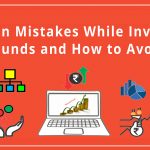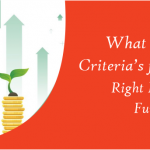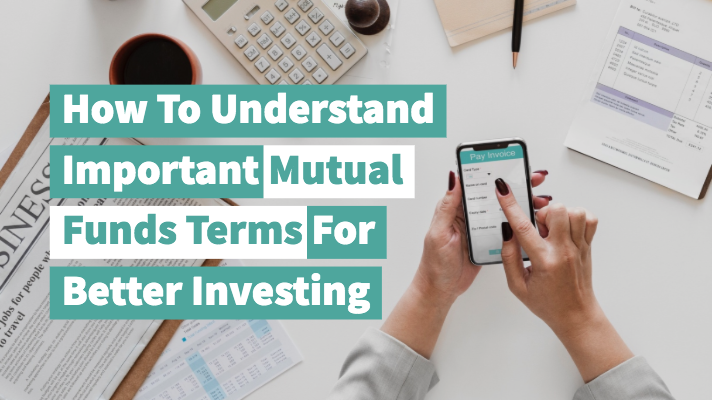Institutional players mostly dominate the debt market segment in India. Direct participation of retail investors is negligible in this segment. This is so because either they show no interest or as it is poorly understood. However, the equation is changing but very slowly, with the debt mutual fund schemes in India.
It hardly matters whether you are planning to save money through mutual funds for the first time or are a regular investor. You should consider some debt mutual fund schemes for your long-term portfolio. Even if you do a regular or occasional stock market investments, then also you must part with some money towards such schemes.
In this blog, I will cover in details about debt mutual fund schemes of India. Here you will not only get to know about various debt funds but will also be able to differentiate among various subcategories. This will for definite help you choose some schemes according to your needs.
What are the debt mutual fund schemes?
In general, the debt mutual fund schemes invest in the portfolio of bonds, fixed income and debt instruments. The debt and fixed income instruments that such debt mutual funds invest include treasury bills, government securities, corporate bonds, money market instruments and etc.
As per SEBI guidelines, it is mandatory for all debt fund to publish daily the value of their portfolio, after costs. Technically the daily value of the portfolio is known as the NAV (net asset value). NAV in-fact is per unit value of the portfolio of any mutual funds.
Now let us understand a little bit about the concept of debt. This will help to invest with proper knowledge in such an exclusive debt based instrument. When business requires money, it goes with either part with equity or borrows money. They part with equity in the stock market through IPO and other means. However, they have the option to borrow by two means. Either they enter into the contract with the lender such as banks and financial institutions and take the loan. Alternatively, they go with the process to issue bonds or an instrument, and the lender invests in it.
Not only business but also governments and semi-government bodies raises funds through these routes. Now the mutual funds that are debt based invest only in instruments of the second category.
Thus when you buy some units of any such debt mutual fund scheme for your portfolio, passively you are investing in such debt instruments with minimal risk. Moreover, you don’t have to keep aside huge funds if you route your investments through such mutual fund schemes.
What different types of debt mutual fund schemes are available for retail investors in India?
Every mutual fund schemes hold the portfolio of vivid financial instruments. Debt mutual fund schemes are no exception. However, different schemes of debt mutual funds hold different types of debt and fixed income instruments in different proportion. This is in-fact the differentiating factor for the types of debt mutual fund schemes. After understanding the basis on which these mutual fund schemes were grouped, let us now understand how it was in actual done.
On October 2018, the apex regulator, SEBI (Securities and exchange board of India) came out with a circular. This circular was on categorization and rationalization of mutual fund schemes in India. This circular laid down detailed guidelines on the categories and subcategories of mutual fund schemes that are operational in India. There is a total of 16 subcategories of debt mutual fund schemes in India.
The list of debt mutual fund schemes along with a brief description of each is there in the following sub-section. This list of debt fund schemes will be handy while you define your purpose of investing in debt funds. A key point to remember at this point in time is that all debt mutual funds are open-ended. It means that the issue and redemption of units of such funds are not time dependent.
As a retail investor, you can purchase units directly from the issuers. You needn’t have to repurchase it from an existing unitholder, like in case of shares.
List of different types of debt mutual funds schemes in India
| S.No |
Category |
Scheme Characteristics |
| 1 |
|
Invest exclusively in overnight securities having the maturity of 1 day. It is a pure debt scheme. |
| 2 |
Liquid funds
|
Invest in debt and money market instruments with a maturity of up to 91 days. It is a liquid scheme. |
| 3 |
Ultrashort duration funds
|
Invest in debt & money market instruments such that the Macaulay duration of the portfolio is between 3 and 6 months. It is an ultra-short-term debt scheme. |
| 4 |
Low duration funds
|
Invest in debt & money market instruments such that the Macaulay duration of the portfolio is between 6 and 12 months. It is a low duration debt scheme. |
| 5 |
|
Invest in money market instruments having maturity up to 1 year. It is a pure debt scheme. |
| 6 |
Short duration funds
|
Invest in debt & money market instruments such that the Macaulay duration of the portfolio is between 1 and 3 years. It is a short-term debt scheme. |
| 7 |
Medium duration funds
|
Invest in debt & money market instruments such that the Macaulay duration of the portfolio is between 3 and 4 years. It is a medium-term debt scheme. |
| 8 |
Medium to long duration fund
|
Investment in debt & money market instruments such that the Macaulay duration of the portfolio is between 4 – 7 years. It is a medium-term debt scheme. |
| 9 |
Long duration fund
|
Investment in debt & money market Instruments such that the Macaulay duration of the portfolio is greater than 7 years. It is a pure debt scheme. |
| 10 |
Dynamic bond
|
Investment across duration. It is a dynamic debt scheme. |
| 11 |
Corporate bond fund
|
Minimum investment in corporate bonds – 80% of total assets (only in highest rated instruments). It is a pure debt scheme. |
| 12 |
Credit risk fund
|
Minimum investment in corporate bonds- 65% of total assets (investment in below highest rated instruments). It is a pure debt scheme. |
| 13 |
Banking and PSU fund
|
Minimum investment in debt instruments of banks, public sector undertakings, public financial institutions- 80% of total assets. It is a pure debt scheme. |
| 14 |
Gilt fund
|
Minimum investment in Gsecs- 80% of total assets (across maturity). It is a pure debt scheme. |
| 15 |
The gilt fund with a 10-year constant duration
|
Minimum investment in Gsecs- 80% of total assets such that the Macaulay duration of the portfolio is equal to 10 years. It is a pure debt scheme. |
| 16 |
Floater fund
|
Minimum investment in floating rate instruments- 65% of total assets. It is a pure debt scheme. |
Why investing in a debt mutual fund scheme is better than bank deposits?
In the case of a bank deposit, you lend your savings to the bank. In turn, those banks use your money for a fixed period and in return pays you interest. What the bank arranges, whom it grants to, how these investments deliver, and similar decisions are not taken by you as an investor. Banks take all these kind of decisions and hence do not influence the investor directly.
Contrary to this, debt fund investors do not have such a cushion of a bank’s balance sheet. Shield coming in between your money and the borrowers’ from the bank who are on the asset side. Here as in case of debt funds every earning (on the asset side minus expenses), belong to you.
Let us understand this with the help of an example. Suppose a debt fund charges an annual fee of 0.5 a per cent as an annual fee. Further, it lends money with the same market as that of the bank. Further, the banks being the middleman charges 3% annual net interest margin before paying their depositor. While in the case of the debt fund there is no such net interest margin involved, so is a better bet.
Why investing in debt mutual funds a better option than investing directly in debt instruments?
As a retail investor, it is really difficult to invest in the short-term money markets instruments directly. Investment in such instruments requires a high quantum of funds. So mostly retail investors let their money lie idle in their bank accounts.
A debt fund accounts interest earning every day. Also, it offers redemption on the t+1 basis. You as a retail investor have the privilege to access this deb market through debt mutual funds. This you can do instead of accepting a lower return on bank deposits.
So, investing in debt mutual funds is a better option than investing directly into any debt instruments.
What is the mark to market risk in debt instruments?
In order to get most of the investment, you need to understand the complexity of the risk of debt mutual fund schemes properly. Let us simplify the complexity of the risks.
When you buy a bond it involves holding till maturity and earning interest. Suppose you pick a three-year bond offering 7% interest. Your cash flow is INR 7 on every investment of INR 100, until the maturity. Post-maturity you get back your principal amount.
Now think why 7%? This is so because it is the market rate for a three-year borrowing, during the time of issue of bond. However, it is also true that interest rate changes and new borrowings also happens. New borrowings may happen at a different rate in the future. Yet this bond remains to pay according to the pre-set offerings.
Now suppose after six months the interest rates move up. Your bond remains a 2.5 years instrument. However, now in order to borrow freshly for the remaining 2-5 years assume one has to pay 8%, in place of 7%. So the new bonds will be available at the new 8% rate.
But the older bond continues to give 7%. The question is who would buy a bond that pays 7% when the market rate is 8%? So the market will tend to set the price down. In a fair market, there cannot have different interest rate paying bonds with the same maturity. Selling at same INR 100 price.
So, the old bond price has to fall. It falls exactly equivalent to earning 7% on the old bond as earning 8% on the new bond. This we call mark to market risk in debt instruments.
Do debt mutual fund schemes also carries the mark to market risk?
All debt mutual fund schemes also carry the mark to market risk. Debt mutual funds have to declare NAVs daily. NAVs reflects the value of the bonds it holds.
Whenever interest rates move up, the older bonds lose value, and vice-versa. When you buy or sell a debt mutual fund you pay the NAV. This NAV in-fact reflects market reality. Consequently, you do not earn the interest income only. But also gain or lose from the change in the value of the bonds.
Please note that the gain or loss may be higher or lower. This mainly depends on what structure the cash flows in the debt fund. The mutual fund industry measures this number as a duration. Remember that –
“Higher the duration, greater the mark to market risks of debt mutual fund schemes.”
How to choose a debt mutual fund scheme for your portfolio?
Being a retail investor, how should you choose a debt fund for your portfolio? The straightforward answer is, on the basis of NAV. The practical approach is to look at the past performance of the NAV of any debt fund under consideration. What you need to do is to plot graphically the historical NAVs of the fund. This will give you a clear picture of how your INR 10 a unit would have grown over time.
If the slope of that line is upward, it will indicate that you have steady interest income from the fund. However, the line won’t be straight. There must be kinks in between. Technically, those kinks represent what we call mark to market risk.
It gives you some rough idea on how much time the fund took for those kinks to even off. Thus, it means that how much time the fund manager took for recovery from any mark to market loss in past. Always keep in mind the following –
“Smoother the path with scattered kinks, the less risky is the fund and the faster will be the recovery in case of loss.”
Consequently, if you are looking for receiving a market rate at a lower cost, you must count in debt funds. Furthermore, you must also do not get misled by offerings on tax, exclusivity, better strategy or dividend plans.
About Author

Stock Trading Now trade in ₹9 Per Order or ₹ 999 Per Month Plans.
Future & Options Access F&O contracts with advanced tools for hedging and speculation.
Currency Trading Trade in major currency pairs and manage forex exposure efficiently.
Commodity Trading Diversify Trading with MCX & NCDEX by Trading in Gold, Silver, Base Metals, Energy, and Agri Products.
Margin Trading Funding Boost your buying power with upto 5X, Buy now Pay Later
Algo Trading Back test, Paper Trade your logic & Automate your strategies with low-latency APIs.
Trading View Leverage Trading View charts and indicators integrated into your trading platform.
Advanced Options Trading Execute multi-leg option strategies with precision and insights.
Stock Lending & Borrowing Earn passive income by lending stocks securely through SLB.
Foreign Portfolio Investment Enable NRIs and FPIs to invest in Indian markets with ease and compliance.
IPO Invest in upcoming IPOs online with real-time tracking and instant allotment updates.
Direct Mutul Funds 0% Commissions by investing in more than +3500 Direct Mutual Fund Scheme.
Corporate FDRs Earn fixed returns with low-risk investments in high-rated corporate fixed deposits.
Stocks SIPs Build long-term wealth with systematic investment plans in top-performing stocks.
Bonds & NCDs Access secure, fixed-income investments through government and corporate bond offerings.
Depository Services Safely hold and manage your securities with seamless Demat and DP services with CDSL.
Insurance One-Stop Destination For All Your Insurance Needs. Compare Quotes from Top Insurers & save bigs.
Journey Tracing our growth and milestones over time.
Mission & Vision Guided by purpose, driven by long-term vision.
Why RMoney Platform Smart, reliable platform for all investors' needs.
Management Experienced leadership driving strategic financial excellence.
Credentials Certified expertise with trusted industry recognition.
Press Release Latest company news, updates, and announcements.
Testimonials Real client stories sharing their success journeys.
7 Reasons to Invest Top benefits that make investing with us smart.
SEBI Registered Research Trusted insights backed by SEBI-compliant research.
Our Technology Advanced tools enabling efficient online trading.
Calculators Access a suite of smart tools to plan trades, margins, and returns effectively.
Margin Calculator Instantly check margin requirements for intraday and delivery trades.
MTF Calculator Calculate MTF funding cost upfront to ensure full transparency before placing a trade.
Brokerage Calculator Know your exact brokerage charges before placing any trade.
Market Place Explore curated investment products and trading tools in one convenient hub.
RMoney Gyan Enhance your market knowledge with expert blogs, videos, and tutorials.
Performance Tracker Track our research performance with full transparency using our performance tracker.
Feedback Share your suggestions or concerns to help us improve your experience.
Downloads Access important forms, software, and documents in one place.
Locate Us Find the nearest RMoney branch or service center quickly.
Escalation Matrix Resolve issues faster with our structured support escalation process.
Back Office Log in to view trade reports, ledger, and portfolio statements anytime.
Account Modification Update personal or bank details linked to your trading account.
Fund Transfer Transfer funds instantly online with quick limit updation to your trading account.
Bank Details View our registered bank account details for seamless transactions by NEFT, RTGS or IMPS.
How to Apply IPO Step-by-step guide to apply for IPOs using your trading account.
RMoney Quick Mobile App Trade on-the-go with our all-in-one mobile trading app.
RMoney Quick login Quickly access your trading account through the RMoney Quick web-based trading.
RMoney Rocket Web Version Experience powerful web-based trading with advanced tools for algo traders.
RMoney Rocket Mobile Version Trade anytime, anywhere with our feature-rich mobile trading platform.



















